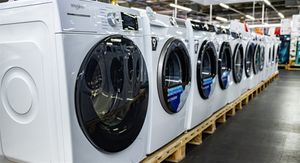The Agency for Toxic Substances and Disease Registry (ATSDR) describes ethylene glycol as a synthetic liquid substance that absorbs water, is odorless, and has a sweet taste - although it is poisonous.
Ethylene glycol is used in hydraulic brake fluids and inks used in stamp pads, ballpoint pens and print shops. It can also be found in some air-conditioning systems and geothermal heating/cooling systems, and is an important precursor to polyester fibers and resins. Antifreeze and de-icing solutions for cars, airplanes and boats are also made with ethylene glycol.
The National Institute for Occupational Safety and Health (NIOSH) reports that exposure can harm the eyes, skin, kidneys and respiratory system, and can cause death if swallowed. ATSDR states that exposure to large amounts of ethylene glycol can damage the kidneys, nervous system, lungs and heart.
Some examples of workers that could be at risk of exposure according to NIOSH include:
- Factory workers involved in the manufacture of polyester
- Workers who use certain solvents
- Employees working with heating and cooling systems
- Factory workers exposed to certain manufacturing processes
“To help protect workers from exposure risks to ethylene glycol, the American Conference of Governmental Industrial Hygienists has set a Threshold Limit Value (TLV) for it,” said Zahid Iqbal, MPH, CIH and Technical Director at Clark Seif Clark (CSC). “Back in 2015, it was added to California's Proposition 65 list of chemicals known to the state to cause reproductive toxicity. These are all reasons why the industrial hygiene and environmental professionals at CSC offer testing, monitoring, consulting and training services to identify and mitigate risks associated with ethylene glycol and many other occupational hazards. These services protect workers and help to keep companies in regulatory compliance.”
CSC recently sponsored an educational video about ethylene glycol and workplace exposure hazards that can be seen at: https://youtu.be/KPGnCIMNoYs
To learn more about this or other industrial hygiene, indoor air quality, environmental, health and safety services, please visit www.csceng.com, email csc@csceng.com or call (800) 807-1118.
About Clark Seif Clark
CSC was established in 1989 to help clients in both public and private sectors address indoor air quality, occupational, environmental, and health and safety (EH&S) issues. CSC is a leading provider of these services with multiple offices along the western seaboard and southwest. The company believes in science-based protocols and has a strong background in engineering, making them the preferred environmental consultants to industrial clients, healthcare facilities, architects, schools, builders, contractors, developers and real estate professionals.
— WebWireID295253 —





